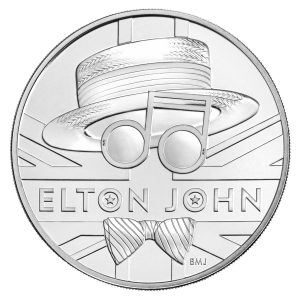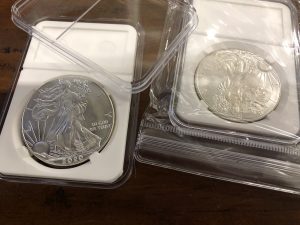Changing Landscape of Online Coin Price Guides
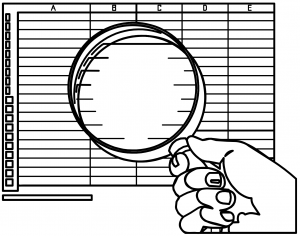 One of the more difficult things to explain to a new collector is how much a coin is worth. A common misconception is that an older coin is worth more than one struck later. Although I wrote two blog posts about coin pricing (links to Part I and Part II), the next question is, ”How much is my coin worth?”
One of the more difficult things to explain to a new collector is how much a coin is worth. A common misconception is that an older coin is worth more than one struck later. Although I wrote two blog posts about coin pricing (links to Part I and Part II), the next question is, ”How much is my coin worth?”
Collectors will turn to price guides to understand how much the coin is worth. Two popular price guides are the Guidebook to United States Coins (the Red Book) and the Coin Dealer’s Newsletter (the Greysheet). The Red Book is a book and requires the collector to purchase one. But for under $20, collectors can have the complete price guide of all United States Coins in their hands.
The Red Book does not have the most up-to-date coin values as a physical publication. But it gives the collector an idea of the value of their coins and is an excellent general reference.
Until recently, the Greysheet offered collectors their retail price guide to anyone visiting their website. While the website’s interface was more artistic than usable, the information was available to collectors.
Last week, Greysheet CEO John Feigenbaum sent an email to subscribers of their mailing list that announced the end of the free access to the retail price guide.
To access the retail price guide, collectors will have to create an account on their site to access up to 10 prices per month. After making 10 free queries, users will have to subscribe to their service for $7.99 per month, a price Feigenbaum says is “about the same as a Starbucks Frappucino — and a lot less calories.“ I prefer a tall three-shot latte that costs less and has fewer calories.
The fallacy of Feigenbaum’s argument is that they collect and publish the data regardless of the way they grant access. What has changed is that the cost of printing has risen. Instead of raising the prices for the printed version of the Greysheet and sister publications for the old dealers that are past their prime, the company passes the costs to collectors.
The Greysheet is a private company and can do what they want. As a collector who does not benefit from paying a monthly subscription to access retail price guides, it is time to add other online coin guide pricing tools. There are alternatives for the average collector. For example, NGC and PCGS publish price guides for coins in their holders. Find these price guides at:
- PCGS Price Guide pcgs.com/prices
- NGC Price Guide ngccoin.com/price-guide
When the need is for general online coin guidance, here are two good resources:
- NumisMedia Collector Fair Market Value Guide can be found at numismedia.com/rarecoinprices/fmv.shtml.
- USA Coin Book has a lot of coin information and collectors buy and sell coins, and each coin page includes pricing information. Find their site at usacoinbook.com.
Even if the Red Book is not immediately accurate, it should be part of your library. As an essential reference, there is no comparable book.
Thank you to the Greysheet for providing the service in the past. But as it is time for you to move on, it is time for the ordinary collector to find other resources.
June 2020 Numismatic Legislation Review (a little late)
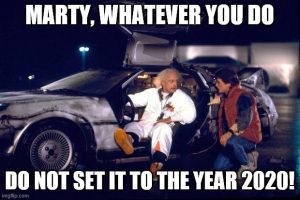 There is a meme going around the Interwebs that shows Doc Brown (Christopher Lloyd) getting out of his modified DeLorean with Marty McFly (Michael J. Fox) standing there with Brown telling Marty not to set the time machine to 2020. If you do not understand the meme, I recommend you stream Back to the Future on your favorite streaming platform. It is a classic movie!
There is a meme going around the Interwebs that shows Doc Brown (Christopher Lloyd) getting out of his modified DeLorean with Marty McFly (Michael J. Fox) standing there with Brown telling Marty not to set the time machine to 2020. If you do not understand the meme, I recommend you stream Back to the Future on your favorite streaming platform. It is a classic movie!
We are 13 days into July, and I realized that June was over, and the Legislative Update was due. Then again, we discussed the only legislation that Congres introduced in June. Otherwise, there is nothing to report on the legislation front.
S. 4006: Coin Metal Modification Authorization and Cost Savings Act of 2020
Weekly World Numismatic News for July 12, 2020
Coins are available from the Royal Mint in gold, silver, and uncirculated. Uncirculated coins come in a special folder honoring Elton John.
There will be those that will complain that these coins hurt the hobby. To borrow a term from our British friends: RUBBISH! If these coins bring people into the hobby, then they are great.
What is bad for the hobby is buying surplus coins from the U.S. Mint and calling it a hoard! For years, the U.S. Mint has been selling off its excess inventory or melting precious metals. This time, someone bought them, sent them to be slabbed, and would jack up the prices under the guise of something special. When the buyer goes to sell them and finds out that they are not worth what they paid, that will have people running away from the hobby. It is similar to the overpriced crap sold on television during the 50 State Quarters program.
Even GovMint.com is getting into the junk selling hype. They have been on satellite radio hawking the emergency production bullion coins struck at Philadelphia after COVID-19 temporarily closed the West Point Mint. Their ad for “P-Mint designated” coins touts them as something special. They are not unique or rare, as the commercial insinuates. Bullion coins are struck at Philadelphia. The difference is that there was a way to determine which mint struck these coins.
What is more damaging to the hobby, selling over-priced bullion or common leftover coins or non-circulating legal tender (NCLT) coins with themes that some old-timers do not seem to like?
Here, let me make some of you upset. I visited the website for the Royal Mint and found something that I will add to my collection:
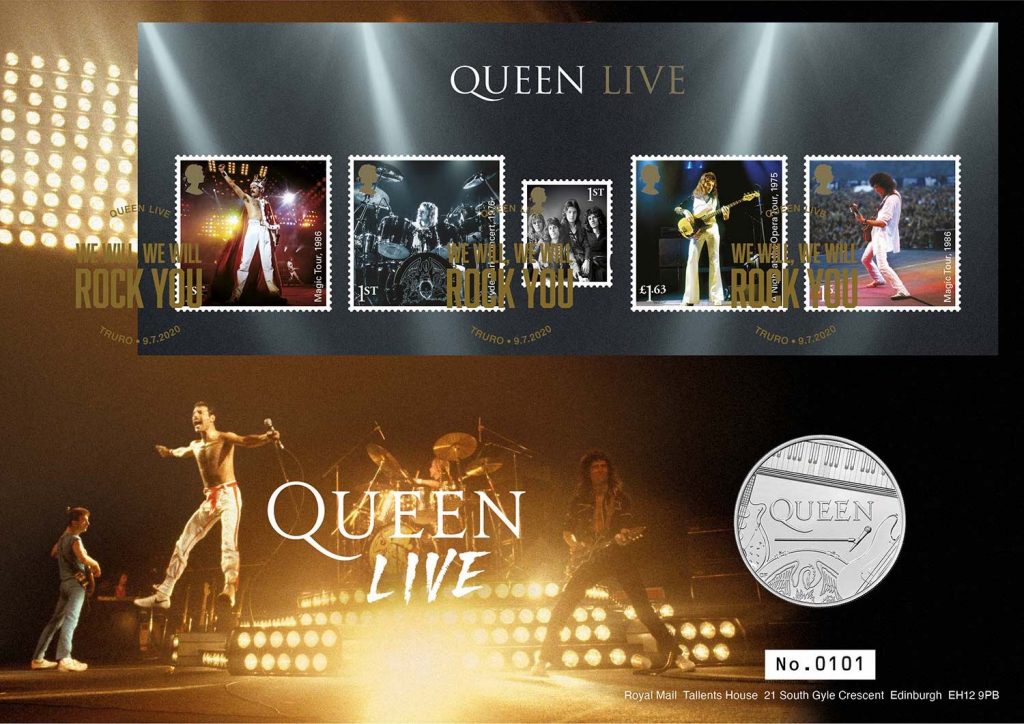
Queen Coin Cover is created in cooperation with the Royal Mint and Royal Mail (Image courtesy of the Royal Mint).
If that makes you upset, then you need to rethink your attitude on the hobby!
And now the news…
 → Read more at deseret.com
→ Read more at deseret.com
 → Read more at crozetgazette.com
→ Read more at crozetgazette.com
 → Read more at gazette-news.co.uk
→ Read more at gazette-news.co.uk
 → Read more at bbc.com
→ Read more at bbc.com
 → Read more at juneauempire.com
→ Read more at juneauempire.com
 → Read more at providencejournal.com
→ Read more at providencejournal.com
 → Read more at snopes.com
→ Read more at snopes.com
The Ancient Coin Collectors Guild Needs Your Help
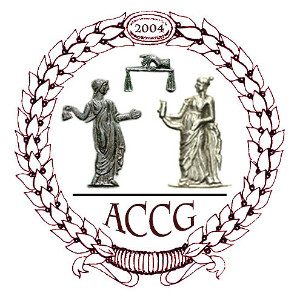 Once again, the State Department is about to do something that negatively affects a part of numismatics. Even if you are not an ancient coin collector, the ability to collect and study ancient coins helps give all of us clarity into history.
Once again, the State Department is about to do something that negatively affects a part of numismatics. Even if you are not an ancient coin collector, the ability to collect and study ancient coins helps give all of us clarity into history.
If the State Department permits the Memorandum of Understanding with Italy to pass, it will signal an end to ancient collectors’ ability to participate in the hobby. First, it will be the restriction of ancient Roman coins, then others will follow. Soon, every coin will become cultural property and locked in a museum, never to be seen again.
I heard it explained that coins were never meant to be static items. The rulers of ancient lands intended for the coins to circulate with their image. It was supposed to tie people to the empire. It was so important to pay the soldiers and circulate the money that coiners accompanied many armies. They would strike coins using the looted material and move on to the next conquest.
Most of these coins are not rare or even scarce. They are common, often seeing hoards of hundreds and accumulation of thousands across Europe. Some of the scarce coins can be readily found on the market and in museums.
However, if we listened to the archeologist, every crumb they find from the ancient past belongs in a museum. The necessity to save every widow’s mite is like wanting to save the Cross of Coronado.
From Wayne Sayles, Executive Director of the Ancient Coin Collectors Guild:
The deadline to send a comment to the Cultural Property Advisory Committee (CPAC) has been extended to July 14, 2020. Comments can be left at:
If you want more detailed information and a sample letter to the CPAC, read:
http://culturalpropertyobserver.blogspot.com/2020/06/please-help-save-roman-imperial-coin.html
In fact, read it anyway. It contains a lot of useful information.
We should stand up for the hobby, whether you collect ancient coins or not!
Buy Me A Coffee
 Some have noticed the new buttons on the Coin Collectors Blog for Buy Me A Coffee. Buy Me A Coffee is a service for content creators to earn a little money on their content. It is like Patreon but more flexible.
Some have noticed the new buttons on the Coin Collectors Blog for Buy Me A Coffee. Buy Me A Coffee is a service for content creators to earn a little money on their content. It is like Patreon but more flexible.
Rather than sell advertising that gets in the way, this is a way to crowdsourcing the funding that will help offset the rising cost of hosting the Coin Collectors Blog and new projects.
I am using Buy Me A Coffee like a tip jar. If you like what you read, hit the button and buy me a coffee. Have you been reading a while and want me to keep going? Hit the button and buy me a coffee.
Right now, I have two extras available through Buy Me A Coffee. Both are a small charge to help identify and give more information about your coin. For $5, I will help identify your U.S. coin, provide some background, and estimate its value. For $10, I will help with all other coins.
On my Contact page, there is an option to ask the questions through Buy Me A Coffee. But if you don’t want to pay, send a note anyway. I have been answering these questions for many years and will continue. After the answer, please consider Buying Me A Coffee.
Within the next week, I will make an e-book available through Buy Me A Coffee. Stay tuned for that announcement!
In the meantime:
SCAM ALERT: LIACOO IS SELLING FAKE SILVER EAGLES!
THE COINS ARE COUNTERFEIT! FAKES!
I ordered the coins on June 4, the day I posted the article. The coins were shipped from China to California to New Jersey to my office. LIACOO used the services of Newgistics, which is now a subsidiary of Pitney-Bowes. By using a logistics company in this manner, they can hide behind the anonymity of the service.
Contacting Pitney-Bowes is nearly impossible. I left a very public message on Twitter. Let’s see if they respond.
When the coins arrived, I opened the package and started to examine the contents. The coins are in a slab-like holder similar to the Coin World holders but without the Coin World logo. At first glance, they look fine, and then a closer look revealed problems.
My first impression was that there are almost no rims on the coin. A closer look at the obverse, and the font is too thin for the LIBERTY around the coin. Then I turned the coin over to focus on the U in United. It is missing the tail on the right side of the U. I did not need to see any more to be convinced this was a fake coin.
- The font for LIBERTY is too thin. Also, the stars in her flag draped over the shoulder are too small.
- Aside from the rims being to thin, look at the U in United and the dash between SILVER and ONE. These are not correct for the 2020 ASE.
Finally, I removed the coin to weigh it. An American Silver Eagle is supposed to weigh just slightly more than one troy ounce because it is only .999 silver. Since my scale only measures grams to the tenths of ounces, it should have weighed 31.1 grams. It weighed 25 grams.
The coin is not magnetic.
I will investigate further, but I wanted to report my initial findings.
DO NOT BUY CHEAP EAGLES FROM RANDOM WEBSITES!
I bought these coins to prove my point. I knew I was potentially buying fakes. I spent less than $30 for education aids.
Unfortunately, two correspondents wrote to tell me they each bought ten coins from different dealers. They spent $19.95 per coin. Both lost over $200 with the shipping costs.
IF YOU CANNOT IDENTIFY THE DEALER, THEIR EXACT LOCATION, AND THEIR BUSINESS STATUS, THEN DO NOT BUY THEIR COINS!
LIACOO is a scam. It is a company based in China. DO NOT BUT FROM THEM!
